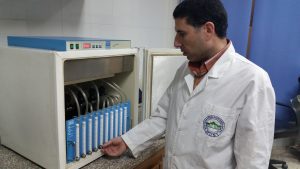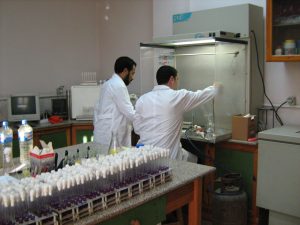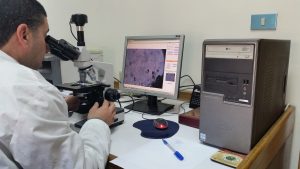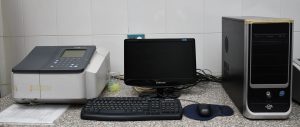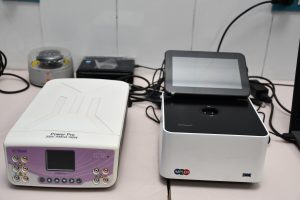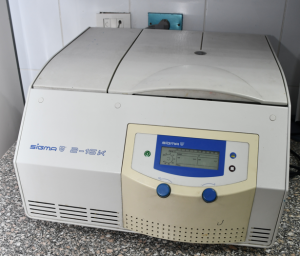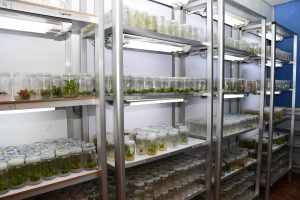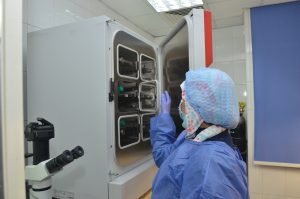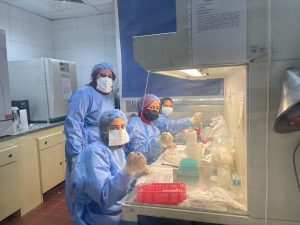The center achieves its objectives through four main pillars, which are:
– Research Studies:
The center conducts research studies and scientific research through its research units. These studies aim to serve the community, promote environmental development, and solve problems for institutions, companies, investors, and entrepreneurs.
– Training Courses:
The center organizes regular training courses in various fields, including chromatographic analysis, spectroscopic analysis, estimation of heavy elements using atomic absorption, and assessment of organic, inorganic, and microbial pollutants in water and soil. The center also offers courses in molecular biology and genetic engineering. These courses aim to provide participants with valuable experiences, skills, and technology transfer.
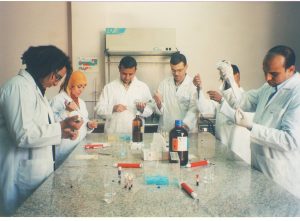
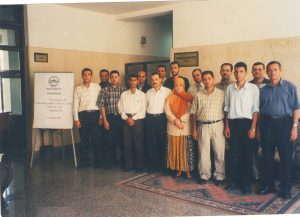
– Scientific Conferences and Workshops:
The center organizes scientific conferences and workshops that address current topics of interest to researchers, the community, and the environment. These events aim to solve problems for investors and entrepreneurs in various fields, contributing to driving development forward. The conferences and workshops conclude with the development of practical solutions or recommendations that can be implemented in real-life situations.
– Service Analysis and Scientific Consultations:
- Conduct field studies and laboratory tests for agricultural or reclaimed lands to assess their chemical, physical, and biological properties, including fertility, suitability for cultivation, and optimal irrigation methods.
- Analyzing and evaluating both solid and liquid mineral and organic fertilizers.
- Analyzing water samples and determining their suitability for irrigation.
- Analyzing drinking water.
- Analyzing plant and soil samples.
- Estimating organic, inorganic, and biological pollutants in water (drinking, irrigation, discharge, and wastewater) as well as in plants and agricultural soil or any other medium.
- Conducting microbiological tests in food, dairy products, water, and soil.
- Estimating specific elements such as Hg, Zr, Se, Si, Ni, Cd, Pb, Cr, Co, B, Mo, Cu, Zn, Mn, Fe, and some other elements (Mg, Ca, K, Na) using techniques such as atomic absorption spectroscopy.
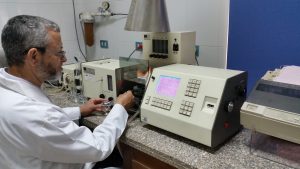
- Estimating amino acids, fatty acids, essential oils, sugars, vitamins, phenols, and pesticides can be done using chromatographic analysis devices such as High-Performance Liquid Chromatography (HPLC) and Gas Chromatography (GC).
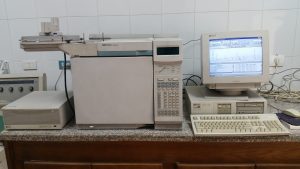
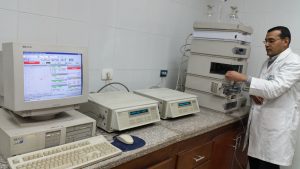
- Estimating total and free amino acids, phosphorus, sulfur, boron, total phenols, enzymes, total sugars, total proteins, and plant hormones can be done after their extraction from respective sources using a UV Spectrophotometer.
- Estimating peptides, proteins, antibodies, and hormones can be done using the Enzyme-Linked Immunosorbent Assay (ELISA) technique.
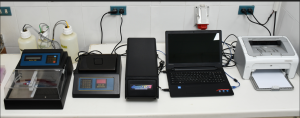
- Estimating the particle size distribution of suspensions and powders with diameters ranging from 0.4 µm to 900 µm can be done using a Particle Size Distribution Ins.
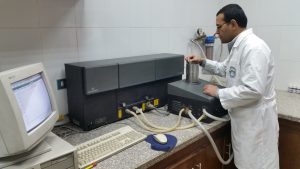
- Estimating total nitrogen and water-soluble nitrogen (NO3– , NH4+) as well as total protein.
- Estimating the nutritional elements in plants from soil, water, and fertilizers.
- Extracting organic compounds such as lipids, fatty acids, sugars, and other plant samples using a Soxhlet extractor.
- Safely and accurately evaporating organic solvents from samples or reaction mixtures using a Rotary evaporator.
- Estimating Biological Oxygen Demand (BOD).
- Estimating Chemical Oxygen Demand (COD).
